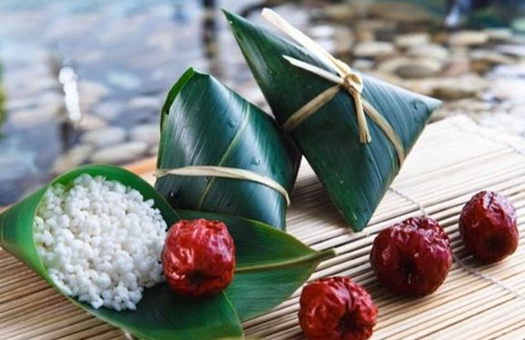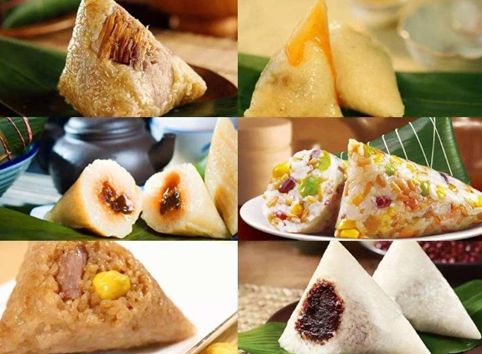Have
you ever eaten zongzi? Eating zongzi is one of the traditional customs of the
Dragon Boat Festival. Zongzi is one of the traditional food with the deepest
accumulation in Chinese history and culture and it has been spread for a long
time. The custom of eating zongzi on the Dragon Boat Festival has a history of
thousands of years in China and the custom of eating zongzi has spread to North
Korea, Japan and other Southeast Asian countries.

Zongzi
is a steamed food made of glutinous rice wrapped in zong leaves. The main
ingredients of zongzi are glutinous rice and fillings, which are wrapped in rue
leaves. There are many shapes of zongzi, mainly including sharp corners and
four corners. Due to the differences in the geographical environment and
climate between the south and north of China, the eating habits of the north
and south are different. The taste of zongzi has formed different tastes
between the south and the north of China.
In
terms of taste, zongzi can be divided into two categories: salty zongzi and
sweet zongzi. To distinguish from the filling, there are Beijing red date
zongzi with red dates as the filling in the north. There are many kinds of
fillings in the south of China such as mung bean, pork belly, bean paste, eight
treasures, ham, mushrooms, egg yolk, etc. Among them, the bacon zongzi from
Guangdong and the zongzi from Jiaxing, Zhejiang are the representatives. In
2012, Zongzi was selected as one of the food series in the second episode of
the documentary "A Bite of China", "The Story of Staple
Food".

Zongzi
first appeared in the late Eastern Han Dynasty. In the Jin Dynasty, Zongzi
became the food of the Dragon Boat Festival. At this time, in addition to
glutinous rice, the raw materials for making zongzi are also added with Chinese
medicine Yizhiren. The cooked zongzi is called "yizhi zongzi". Some
meat, chestnuts, etc. are added to glutinous rice, and there are more varieties
of zongzi. Zongzi is also used as a gift.
Cone
and diamond-shaped zongzi appeared in the zongzi of the Tang Dynasty. In the
Song Dynasty, there were already candied rice dumplings, and the fruit was
added to the rice dumplings. The famous poet Su Dongpo once wrote that he had
eaten bayberry in the rice dumplings. In the Song Dynasty, eating zongzi has
become very popular.

During
the Ming and Qing dynasties, the leaves used to wrap the zongzi had become reed
leaves, and bean paste, pine nuts, red dates, and walnuts also appeared in the
fillings of the zongzi. The variety of zongzi is more abundant. "Ham
dumplings" appeared in the Qing Dynasty, and zongzi became auspicious
food. According to legend, at that time, all talents who participated in the
imperial examinations had to eat rice dumplings specially packaged by their
parents before entering the examination room, which meant that the examination
went smoothly and the title of the gold list.
Bacon
Zongzi should first mix the fresh pork with a little MSG, sugar, wine, salt,
and light soy sauce before making the zongzi. The bean paste dumplings should
not be tied too tightly to prevent the rice grains from squeezing into the bean
paste. If they are not cooked thoroughly, they will become trapped. If the
bacon dumplings are made of lean pork, they must be tied tightly, because the
lean meat will shrink after it is cooked, and the fatty juice of the dumplings
will leak into the water, which will not keep the rice dumplings fat.

When
boiling the zongzi, the zongzi must be boiled. The water must be soaked in the
zongzi noodles. After the rice dumplings are boiled again, they can be boiled
for about 3 hours. Do not add water during the cooking process. Be careful not
to cook the rice dumplings with other rice dumplings. Take it out while it's
hot after cooking. When eating, the zong leaves are opened, and the nose is
fragrant. The mouth is oily but not greasy, glutinous but not sticky. The salty
and sweetness is moderate, and the fragrant and delicious are top grade.

Comment Cancel reply